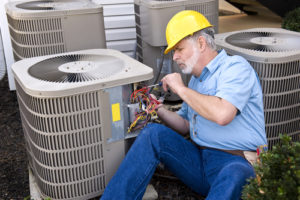 The steps you and your HVAC contractor take when installing an air conditioner lay the groundwork for how it performs in terms of energy consumption and long-term durability. Cooling systems are complex machines and if one part of the installation isn’t as precise as it needs to be, it will affect all the other components.
The steps you and your HVAC contractor take when installing an air conditioner lay the groundwork for how it performs in terms of energy consumption and long-term durability. Cooling systems are complex machines and if one part of the installation isn’t as precise as it needs to be, it will affect all the other components.
Since it’s also an expensive purchase, it makes sense to look for the best HVAC contractor in your area, usually signified by North American Technician Excellence (NATE) certification. This certification indicates the contractor and technicians meet the most stringent qualifications in the HVAC industry based on knowledge and performance.
Sizing
Going through the sizing process is the first and most critical component of installing an air conditioner. Insist that your HVAC contractor use Manual J software to perform a load calculation for your home.
A load calculation takes into account the size of your home, its overall energy efficiency, the floor plan design and your temperature preferences. The team will input detailed data regarding window sizes and exposure to the sun, air infiltration rates and the number of levels your home has. It’s the most accurate way to find the right size for your home.
Skipping the load calculation can result in oversizing the system, which causes higher energy bills, less comfort and more frequent repairs. When an air conditioner is oversized, it will run in short cycles that harm your equipment by starting and stopping frequently. The electrical load is highest at startup, and this stresses all the components in the system. The shorter running time also leaves humidity behind, decreasing your comfort.
A system that’s too small won’t keep you as comfortable during the hottest weather we experience. Even the most energy efficient system won’t give you the energy savings it promises if it’s too big or small for your home.
Ductwork
Once you and the HVAC contractor know the size of the system, the contractor needs to assess your current supply and return ductwork for capacity and condition. Ducts that are too large won’t push the air out fast enough, and those that are too small will be noisy.
Any existing leaks or breaches need to be sealed with mastic or metal tape. HVAC professionals use tools to assess the amount of air leakage through ductwork, and they should be tested before and after the installation is complete. Leaking ducts drive up energy costs since the air you’ve paid to condition goes into spaces where you don’t need it. The U.S. Department of Energy reports that ductwork leaks can account for energy losses as high as 15 percent. The exact amount depends on the severity of the leak.
Leaking ducts also pull dust into your home, which will reduce indoor air quality. Over time, dust can build inside the ducts that will lower the air conditioner’s efficiency, and they may need professional cleaning. Carbon monoxide (CO) exposure increases if you use vented gas appliances and have leaking ducts. The leaks can backdraft CO through the ducts and into your home’s air.
Airflow
The amount of air flowing through the air handler needs to be calibrated when installing an air conditioner. Too little or too much affect how efficiently the new system can cool your home. If the airflow is too low, the evaporator coil inside the blower compartment can freeze, which harms the compressor and can cause water damage to your home. Most cooling systems have motors whose running speed can be adjusted to match the manufacturer’s specifications. The team will also verify that the airflow throughout your home is balanced for location, especially in areas located in the upper levels.
Refrigerant
Like the airflow, the refrigerant charge has to be carefully calibrated when installing an air conditioner. Too much or too little interfere with the cooling process and like inadequate airflow, too little refrigerant can make the evaporator coil freeze. Fluctuations in the pressure occur as the team installs the refrigerant. The installation team needs to test the refrigerant pressure several times before considering the installation complete.
Learn more about how the experienced pros at Griffith Energy Services tackle installing an air conditioner, or call us at 888-474-3391.
Image Provided by Shutterstock.com



